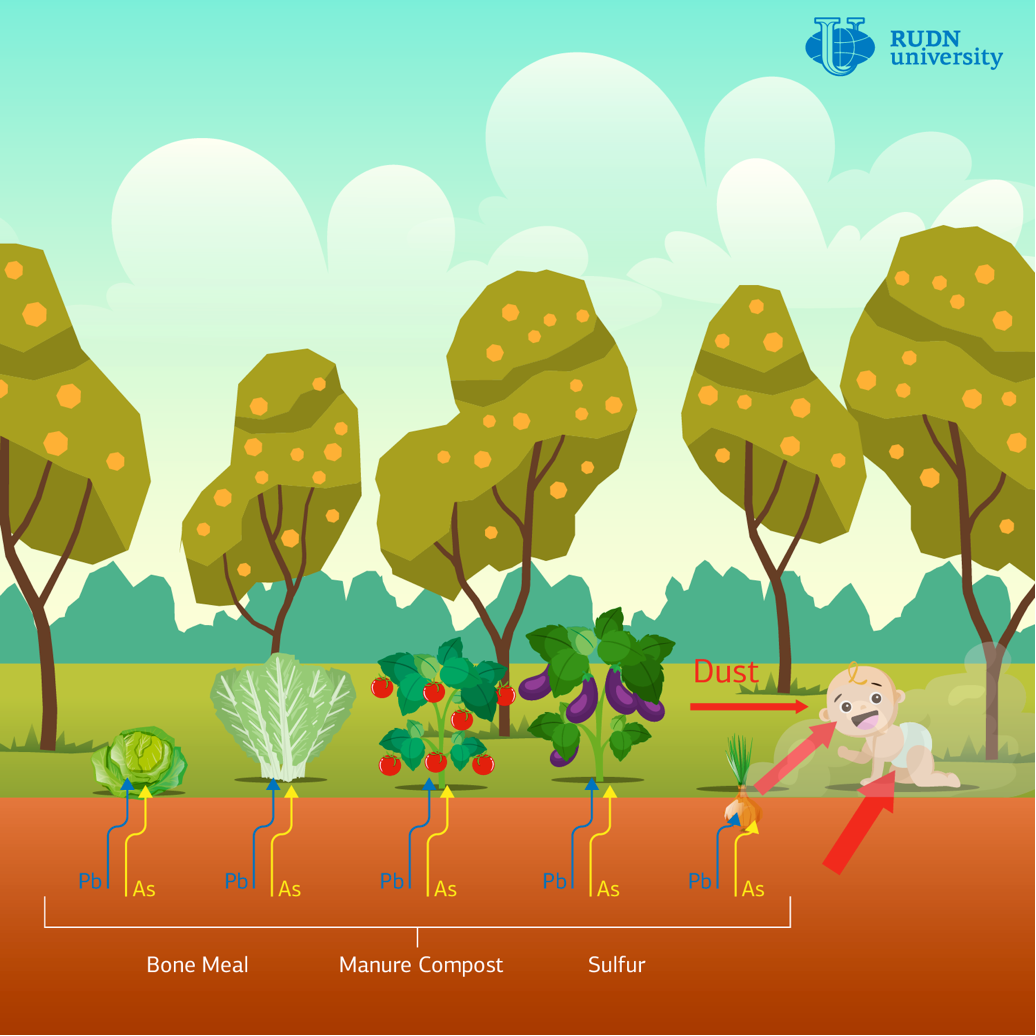Soil scientists suggest method for remediating urban garden soils contaminated with lead and arsenic

High levels of soil contamination in green spaces are potentially harmful to human health. Toxic elements increase the risks of lung, skin, and bladder cancer, as well as various skin disorders. The team took soil samples in Brooklyn urban garden that had been widely discussed in the New York Post as a toxic place.
Dr. Anna Paltseva (RUDN University) together with her colleagues from CUNY Brooklyn College measured the levels of contamination in the garden and analyzed the efficiency of different methods aimed at reducing phyto- and bioaccessibility of lead and arsenic (i.e. the amounts of these chemicals that are accessible in the soil and consumed by plants). These are important parameters because they are more reflective of risks for human health than the general concentration of toxic elements in the soil. Overestimating risks is as bad as underestimating them: it can negatively affect people’s interest in city green spaces and undermine their trust in environmental authorities.
The work fills in some gaps in fundamental research and analysis of the effect of toxic metal footprints on human health. All experiments were conducted on-site without laboratory simulation, which is new for this field of study. “We confirmed that popular fertilizers often do not have the desired effect in the presence of two or more contaminating agents. We also suggested using local resources to combat this issue: for example, glacial deposits that were formed here in the North East of the US during the Last Ice Age over 10 thousand years ago. Mixed with compost, this glacial sand can be used for many years”, said Anna Paltseva, Ph.D. in Earth and Environmental Sciences.
Field studies showed that the most contaminated part of the garden was a soil patch under a peach tree. Supposedly, the reason for it is copper chromated arsenate (CCA), a wood preservation agent that was used here in the past. The team selected four areas in the contaminated territory: three experimental and one control plot. Then, they treated the experimental areas with bone meal, compost, and sulfur. After that, some common urban garden vegetables (tomatoes, eggplants, onions, cabbage, and kale) were planted without any additional fertilizers. When the vegetables ripened, the scientists took their edible parts and compared the levels of arsenic and lead in them against European standards.
All three treatment methods turned out to have considerably reduced the bioaccessibility of lead compared to the control plot: from 33% to 24% in the cases of bone meal and sulfur and to 23% in the case of compost. However, the bioaccessibility of arsenic remained high (80% to 93%) regardless of the treatment.
According to the team, it is the swallowing of soil and dust, not the consumption of fruit and vegetables that poses the biggest threat of lead and arsenic poisoning. The concentration of harmful substances in study varied among different kinds of vegetables: onions showed the highest concentration levels while tomatoes the lowest. According to the authors, the construction of raised beds and the replacement of contaminated soil remain the most efficient remediation method. However, the team will continue their study of alternative remediation methods applicable to urban soils. “Right now at RUDN Smart Urban Nature Laboratory (sunlab.rudn.ru/service/wp2-soi ... -quality-soil-health) we are developing new express techniques that would help us quickly assess the quality of urban soils, and later on—of vegetables and fruits,” added Dr. Paltseva.
The article about the study was published in the Science of the Total Environment journal.
The project to develop a cellular model of the placenta became the winner in the Scientific Materials category of the Young Scientists 3.0 competition, organized with the support of the Presidential Grants Foundation and T-Bank.
Ten scientific journals published by RUDN University have been included in the highest level of the state list of scientific publications, the White List.
Forests are not only the lungs of the planet, but also home to millions of species. However, it has remained unclear how underground interactions between trees and fungi affect forest species richness in different climatic conditions. Previous studies have yielded conflicting results: in some regions, the dominance of certain fungi reduced tree diversity, while in others it increased it.
The project to develop a cellular model of the placenta became the winner in the Scientific Materials category of the Young Scientists 3.0 competition, organized with the support of the Presidential Grants Foundation and T-Bank.
Ten scientific journals published by RUDN University have been included in the highest level of the state list of scientific publications, the White List.
Forests are not only the lungs of the planet, but also home to millions of species. However, it has remained unclear how underground interactions between trees and fungi affect forest species richness in different climatic conditions. Previous studies have yielded conflicting results: in some regions, the dominance of certain fungi reduced tree diversity, while in others it increased it.